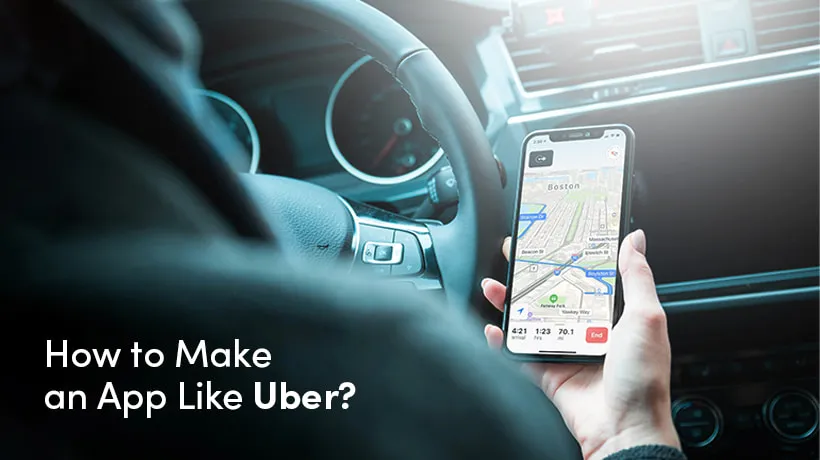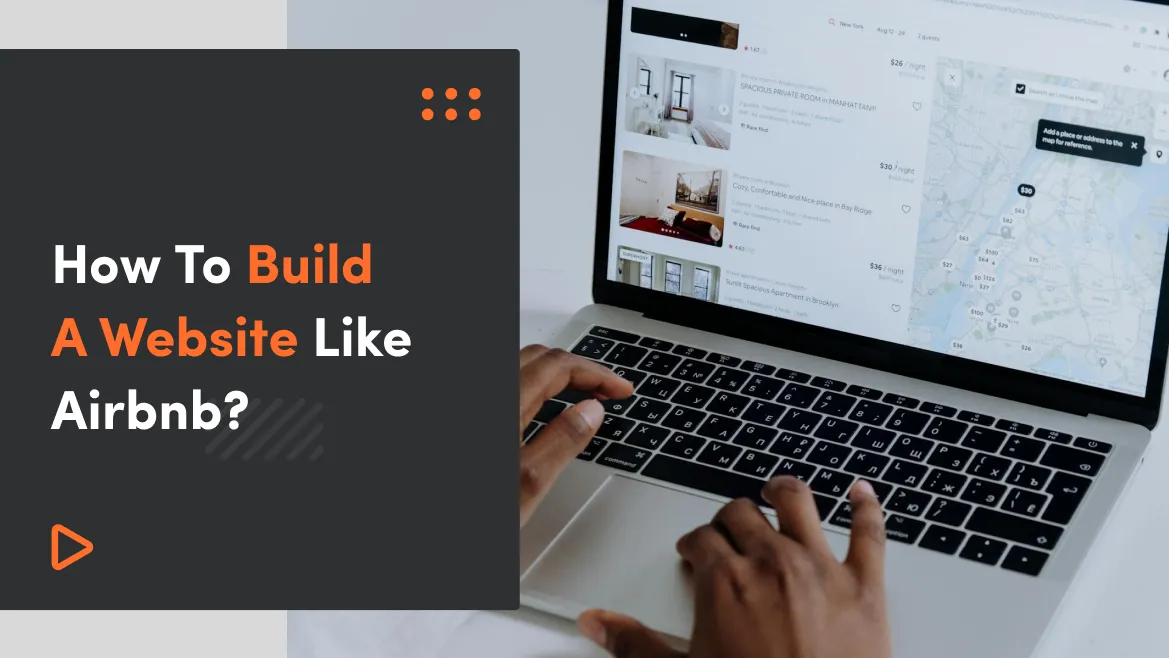Not everyone in the world can own a car. If you own a car, there are still many issues you might face in big cities like New York and London. Due to endless problems with traffic, parking, and car maintenance, most people prefer to hire a taxi then owning a car. Based on these facts, we can say that on-demand-ride-hailing services like Uber will find their users all over the world, which leads us to a simple fact that this is an attractive niche for many entrepreneurs.
COVID-19 has immensely affected this niche over the last few months and in less time than a year, the profits have decreased from $302.2 million to $192.3 million. This year has seen a 36% decline in profit for ride-hailing services. Looking at the pace of growing cities, it is expected that these services will cope with the crisis, and revenues will reach all-time highs in 2023 ($334.5 million).
If you are looking to invest your time and money in building a taxi booking app then this article is for you. To build a taxi booking app, first, we need to understand how it works and what its basic building blocks are.
How Does Ride-Hailing (Uber) Application Work?
An on-demand ride-hailing or ride-sourcing service like Uber acts as a connecting bridge between the consumer (rider) and service provider (driver). It is a marketplace that provides an opportunity for the consumer to book a ride and a service provider to earn money. The application is designed on a basic 5-steps foundation. These steps made a revolutionary change in the market of ride-sourcing services.
Here’s how a ride-hailing app model works.

Step # 1 – A Consumer (Rider) Request a Ride
Consumer requests for a ride using the app from a specified current location. The request is sent to the nearby drivers through the app.
Step # 2 – Matching of Rider and Driver
App sends the ride request to nearby drivers within specified miles. It is up to the driver to either accept the bid or reject it.
Step # 3 – Confirmation of Ride
As the driver accepts the ride, the consumer gets a notification of ride confirmation with an estimated arrival time. A consumer can track the movement of the driver through the app in real-time.
Step # 4 – Ride Ends
After the driver’s arrival, the consumer can check the details on the app, and once confirmed, he/she can sit in the car and ask the driver to start the ride. Once the consumer reaches their destination, the driver ends the ride. The estimated payment amount has already been shared with the consumer which the consumer can pay using cash as well as other cashless payment methods. In many countries, Uber only allowed payment via cashless methods such as credit or debit cards.
Step # 5 – Ratings
Both rider and the driver have the opportunity to rate their experience. The rating factor is significant as it brings trust and reliability among riders and drivers.
Here you must be wondering when the rider is paying the driver the fare of the ride, then how come Uber-like apps are making money. Well, let’s have some detailed research on that too.
How does Uber like Apps make Money?
These apps have two primary sources to earn money. These sources are:
Fees / Commission
Uber-like apps charge a commission from both the rider and driver. A rider pays the fees in terms of extra charges such as ride cancellation charges, animal transportation charges, etc. But, the major part of income is generated through a commission from the drivers. Uber-like apps charge drivers a certain commission for giving them business. For Uber, the commission starts from 20% to 35% of the driver’s total ride fare. Uber’s commission rates differ in different regions.
Sponsored Ads
Since millions of people use ride-hailing applications daily, it is the right spot for companies to run their advertisements. The apps showcase companies sponsored ads on a cost-per-click or similar model. Most of the time, large corporations collaborate with these apps to offer a discount on their products and services for ride-hailing service users.
Now let’s move on to the technical part and learn how to build an app like Uber.
How to Build an App like Uber – A Step by Step Guide
Building an app of such complexity requires both client and server-side development. There is a need for a highly optimized central server to manage the interaction between the users (riders and drivers) on a real-time basis. There is numerous functionality that an app will play like matching, cost calculation, location, guiding the way to the driver through Google map, commission subtraction, and rating. For all these purposes, there should be many geographically distributed servers to optimize response times, eliminate failures, and provide constant service availability.
Let’s look at the steps now:
Step # 1: Find your Niche
You first need to identify your niche for a taxi booking app. Getting an idea about your niche is very important and it can be considered as the foundation of building a taxi booking app.
Step # 2: Conduct Research & Audit
Do your research and gather all the information for taxi mobile app development and improvements you want to make.
Step # 3: Prepare Documentation
Prepare a complete roadmap for the technical specification of app functionality, the app’s architecture, and tech stack details.
Step # 4: Start Development
Divide the project into different tasks, starting to implement each task based on their priority and conduct unit testing to find errors.
Step # 5: Deploy your Uber-like App
After testing and getting a good-to-go report from QA officers, it is time to launch your app to the live environment to ensure that it runs properly on all devices.
Basic and Advanced Features for Taxi Booking Application
The first thing to understand is that a taxi booking app is divided into three different sets of products. There are two separate apps for rider and driver, as well as an admin dashboard. Let’s look at some of the basic and advanced features for each.
Rider/Consumer App
List of Basic Features
Here’re some of the main features that every taxi booking app should have for consumers.
- Registration - Users can easily register by using his/her profile on existing social media or create a new one via email or phone number.
- Ride Booking \– Users can easily book a ride in real-time or can schedule for later. The app should have both options.
- Payments \– It is an important feature that enables a passenger for auto payments right from the app.
- Notifications \– Notifications should be sent to the rider about the trip when the driver accepts the request. The notification message should contain vehicle information such as model, passenger count, color, and the number of the car, and the average time of arrival (ETA).
- Ride History \– An option that shows all the previous rides' transcripts to the consumer. -Fare Calculator - It helps to calculate the cost of the trip.
- Driver’s Review and Rating \– The app should show the driver’s reviews by other customers and overall ratings so that consumers can decide whether to continue the ride or not. This feature is more important to build a trust factor, especially for females.
Advanced Features
Now let’s talk about some of the advanced features for a passenger app:
- Pick-Up Location - By using the built-in GPS module, a consumer can point out his/her exact location without typing the complete pickup address.
- Split Payments - It’s an advanced feature that splits payments between two or more passengers. Uber is using this feature in many regions of the world.
- Vehicle Selection - Allows picking another driver for the trip.
- Interactive Map \– It helps users track the driver’s movement in real-time and show nearby rides.
- In-App Messenger - Ensures communication between passenger and driver right in the app through messages.
- Gamification \– The features motivate users to take more rides to win badges, special offers, leadership boards, etc.
- Discounts - Gives a discount for trips by adding code or digital coupons.
- Voice Recognition \– It is one of the most advanced features not available in many taxi booking apps. It allows the user to give voice commands to the app to book a ride.
It is the end of the list for a Passenger/Consumer/Ride side of the app. Let’s move on to the second app which is for a driver.
Driver’s App
Basic Features
The basic features of the Driver’s app overlap with the passenger/consumer app. The driver app also has the registration feature which allows them to do personal profiling and submitting additional documents like a driver's license. The app also has features like push notification, fare calculator, ride acceptance/rejection, messenger, etc.
Advanced Features
There are some unique elements for drivers’ app which are:
- Status \– It is a feature that makes a driver visible in an app and on the map that he/she is ready to pick rides.
- Order Alert - Informs about a new trip and shows payment and road details. Also, it allows for getting or canceling orders.
- Navigation \– The navigation feature helps the driver to choose the best route for the trip.
- Estimation \– It helps the driver to know the count of trip costs and discount
- Reports \– This feature shows the statistics about trips and earnings to the customer
Let’s move on to the last part which is the Admin dashboard.
Admin Dashboard
Basic Features
One of the basic functions of an Admin Dashboard is to store databases and manage passengers' and drivers' activities. It offers complete details of logistics of drivers and trips and manages all financial issues. It has all the data for both the riders and drivers.
Advanced Features
An admin dashboard can be linked with the Google Analytics tool for analysis of the behavior of app users. It is one of the most advanced and important features to monitor and strategize marketing activities. It can be the starting point for the revision of the entire business process.
One other important thing that should be noted while building an app like Uber is that in many countries, the legislations have strict guidelines that strongly require a detailed admin dashboard, even if it seems functionally unnecessary for your business model.
How to Gain a Competitive Edge in the Taxi Booking Industry
If you copy the same style and features of Uber, how will you gain a competitive edge over it then? There needs to be something unique that users can remember. When it comes to taxi booking apps, innovation becomes even more critical to stay ahead in the competition race.
The following are some of the strategies on which business owners can improve their chances of success.
Unique Value Proposition (UVP)

There is a direct relationship between an app’s success and its end-users’ satisfaction. Based on this fact, the first thing that every taxi booking app needs to add in the list is riders and driver’s satisfaction. There are numerous ways to offer unique value to both rider and driver, some of them are listed below:
Rider’s Unique Value Proposition
- Track the driver’s route and arrival time
- Discounts, badges, prizes on rides
- Fixed affordable prices for known places like Railway Station or Airport
- In-app payment gateways to pay for the rides from within the app
- Fare estimate calculation based on Pickup and drop-off location
Driver’s Unique Value Proposition
- More fare charges in peak hours
- Bonuses on set targets
- Easy and hassle-free registration
- Flexible timings to complete daily or weekly targets
- Insurance coverage
Global Expansion
Being globally recognized is another UVP that inspires people to prefer your brand over others. If you have a budget, expanding your services globally is a competitive advantage. It also raises your target audience to a larger scale. Uber's success is a clear example of it.
There are still untapped markets where Uber has not reached yet, including Brunei, Malta, Iceland, Cyprus, and Luxembourg for different reasons. That’s evidence enough that the service has some roadblocks and the first business to find a way across them can expect huge rewards.
Conclusion
It is correct to say that companies like Uber and Lyft have captured the taxi booking market, but there is still a lot of room and space for new entrants. By identifying a niche and focusing on the unique value proposition, they can create a profitable monetization strategy.
All you need is an out-of-the-box idea and a perfect implementation of that idea in terms of a user-friendly ride-hailing service app. The more innovative and advanced features you will propose to users, the more value your brand will gain in the target audience’s eyes. It can be done by freezing the requirements pre-development or building an MVP first to ascertain product feasibility and response.
If you need guidance along the way to build a taxi booking app, or you want to outsource the project to an exceptionally talented and experienced team of developers, then you should consider Selleo. We have the best developers from around the world to help you develop your dream taxi booking app.




